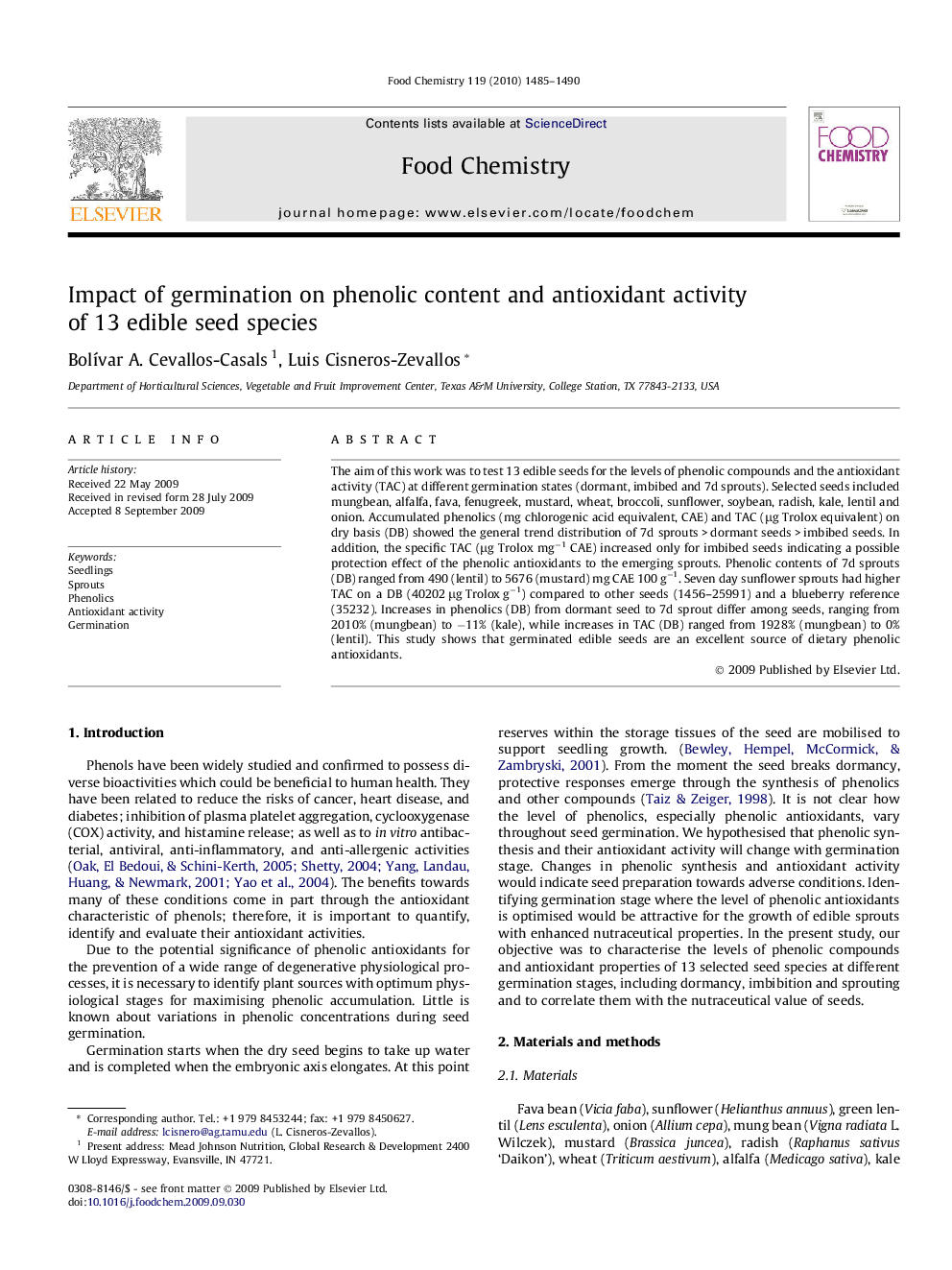| Article ID | Journal | Published Year | Pages | File Type |
|---|---|---|---|---|
| 1185425 | Food Chemistry | 2010 | 6 Pages |
The aim of this work was to test 13 edible seeds for the levels of phenolic compounds and the antioxidant activity (TAC) at different germination states (dormant, imbibed and 7d sprouts). Selected seeds included mungbean, alfalfa, fava, fenugreek, mustard, wheat, broccoli, sunflower, soybean, radish, kale, lentil and onion. Accumulated phenolics (mg chlorogenic acid equivalent, CAE) and TAC (μg Trolox equivalent) on dry basis (DB) showed the general trend distribution of 7d sprouts > dormant seeds > imbibed seeds. In addition, the specific TAC (μg Trolox mg−1 CAE) increased only for imbibed seeds indicating a possible protection effect of the phenolic antioxidants to the emerging sprouts. Phenolic contents of 7d sprouts (DB) ranged from 490 (lentil) to 5676 (mustard) mg CAE 100 g−1. Seven day sunflower sprouts had higher TAC on a DB (40202 μg Trolox g−1) compared to other seeds (1456–25991) and a blueberry reference (35232). Increases in phenolics (DB) from dormant seed to 7d sprout differ among seeds, ranging from 2010% (mungbean) to −11% (kale), while increases in TAC (DB) ranged from 1928% (mungbean) to 0% (lentil). This study shows that germinated edible seeds are an excellent source of dietary phenolic antioxidants.
